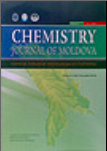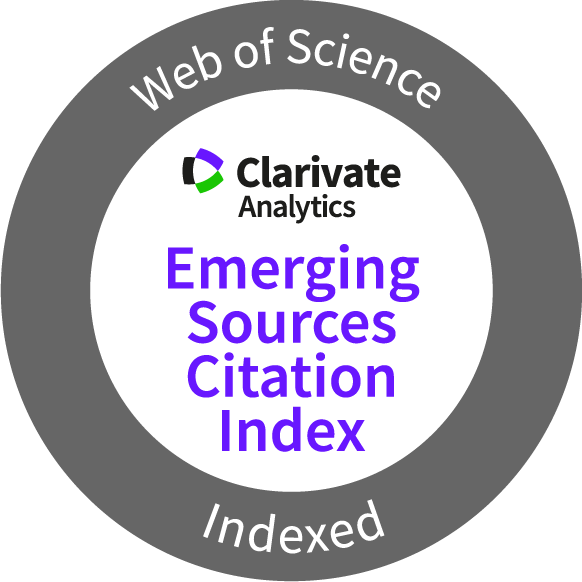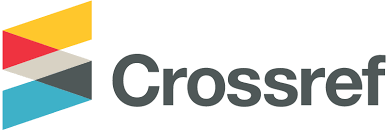Chemistry Journal of Moldova
Accepted papers
Field: Inorganic and coordination chemistry
Type: Research paper
Type: Research paper
MgO nanoparticles, sodium dodecyl sulphate, aloe vera, the coprecipitation method.
Abstract (PDF)
Graphycal Abstract: Two methods for synthesizing MgO nanoparticles using sodium lauryl sulphate and Aloe Vera extract as dispersing agents are described. Varying dispersing agent quantities and calcination temperatures were applied. The morphology and size were characterized using SEM-EDX and XRD, confirming successful synthesis and structure of the MgO nanoparticles.


Field: Natural product chemistry and synthesis
Type: Research paper
Type: Research paper
Bunium ferulaceum Sm., phytochemical analysis, anti-inflammatory activity, antibacterial activity.
Full Text (PDF): Download
Abstract (PDF)
Supplementary Material (PDF)
Graphycal Abstract: Hydro-methanolic extracts of Bunium ferulaceum leaves, flowering heads, and tubers show organ-dependent phytochemical variation. Leaves are richest in phenolics and flavonoids, while tubers contain the highest triterpene levels. Polyphenol content correlates strongly with antibacterial activity, whereas triterpenes are tightly linked to anti-inflammatory effects. These complementary chemical–biological relationships highlight the plant’s multifunctional pharmacological potential, supporting further isolation and mechanistic studies.
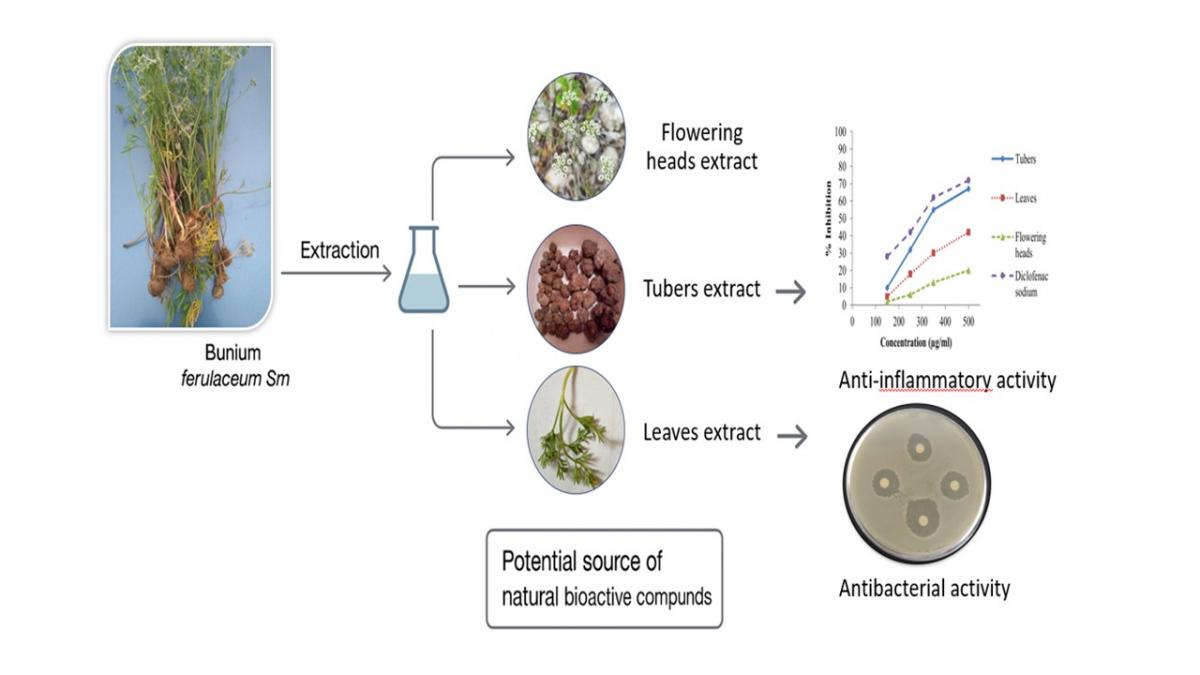

Downloads: 17
Field: Organic chemistry
Type: Research paper
Type: Research paper
Schiff base, MW irradiation, substituent effect, spectrophotometric property, DFT calculation.
Full Text (PDF): Download
https://doi.org/10.19261/cjm.2025.1367
Abstract (PDF)
Graphycal Abstract: In this work, the synthesis of Schiff bases derived from trans-(R,R)-diaminocyclohexane by microwave irradiation (MW) is presented. The reaction yields varied between 31% and 69%, being influenced by the electronic nature of the substituents (H, Cl, Br, NO2, MeO, t-BuO, BnO, and 4-(4-Me)PhO) and the reaction temperature. The spectrophotometric properties of the products were investigated by UV-Vis spectrophotometry, revealing bathochromic and hypso-chromic effects attributable to the different substituent groups. These effects were interpreted by DFT calculations with the B3LYP functional at the 6-311G(d,p) level. The results suggest that the electronic properties of the substituents in the para position have a significant impact on the spectroscopic characteristics of the Schiff bases.
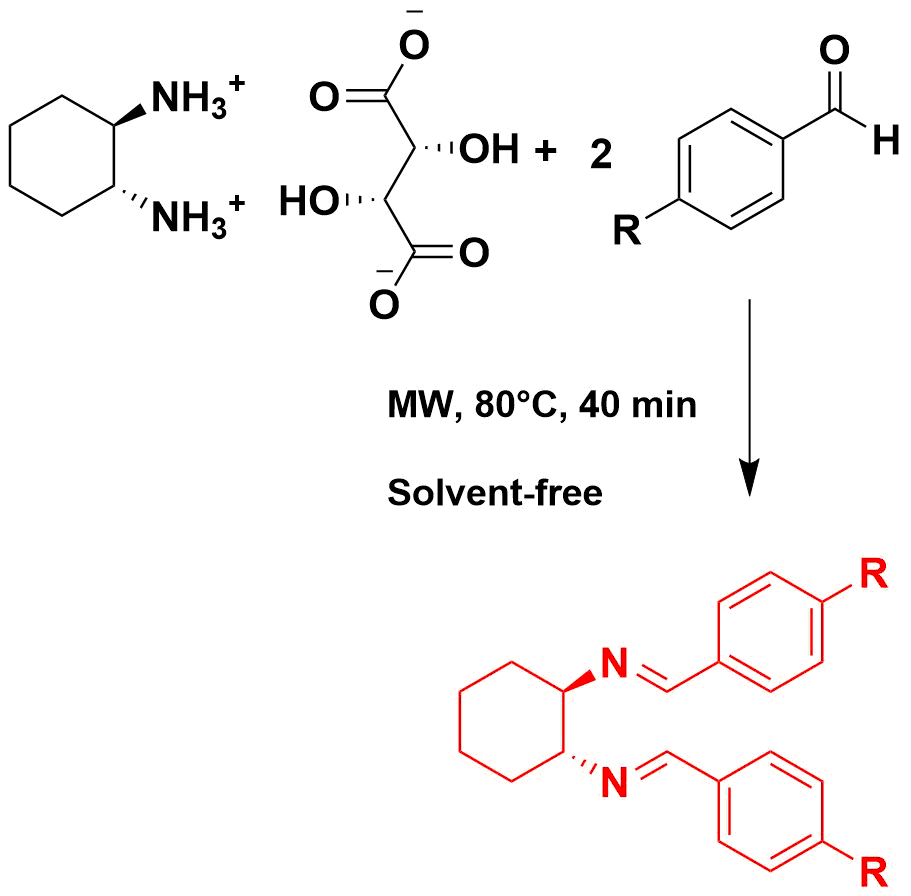

Downloads: 3
Field: Inorganic and coordination chemistry
Type: Research paper
Type: Research paper
coordination polymer, 1,2,3-triazole, thermogravimetry, photoluminescence.
Abstract (PDF)
Graphycal Abstract: A new cadmium(II) polymeric complex was synthesized under solvothermal conditions by the reaction of 5-(4-carboxy-5-methyl-1H-1,2,3-triazol-1-yl)isophthalic acid (H3L) with cadmium nitrate tetrahydrate in a mixture of N,N-dimethylacetamide and water. The polymeric complex is an infinite 2D coordination polymer with the general formula {[Cd3L2(H2O)6]·2H2O}n. The two-dimensional coordination polymer {[Cd3L2(H2O)6]}n presents p–p stacking interactions between benzene rings of adjacent 2D coordination polymers, which contribute along with numerous O-H---O H-bonds to the assembly of a 3D supramolecular assembly. The intense photoluminescence emission of cadmium(II) complex is observed in the blue-violet region of the spectrum.
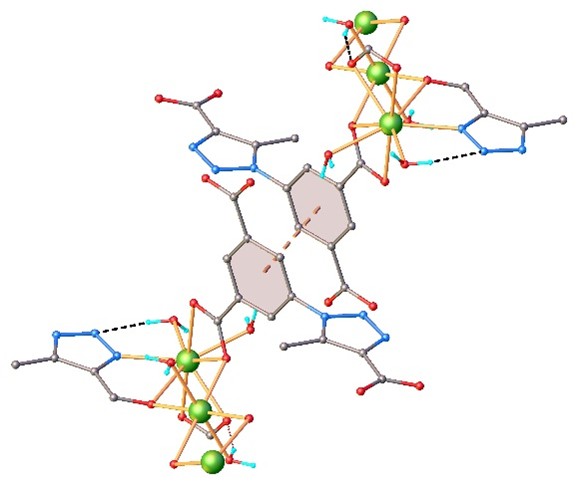

Field: Physical chemistry and chemical physics
Type: Research paper
Type: Research paper
furan derivative, in silico, corrosion inhibitor, mild steel, density functional theory.
Full Text (PDF): Download
https://doi.org/10.19261/cjm.2025.1342
Abstract (PDF)
Graphycal Abstract: The contribution of in silico analysis in the development of corrosion inhibitors field by predicting adequate new molecules that could be employed for this purpose. QSAR analysis of already published experimental results of corrosion inhibition efficiency (IE%) of mild steel in acidic media for eighteen furan derivatives was performed.


Downloads: 4
Field: Natural product chemistry and synthesis
Type: Research paper
Type: Research paper
lipid fraction, phytosterol, terpenoid, nutraceutical value, pollen.
Full Text (PDF): Download
https://doi.org/10.19261/cjm.2025.1340
Abstract (PDF)
Graphycal Abstract: Lipid fractions from Helianthus annuus L. pollen collected across three Moldovan agroclimatic zones were analyzed via GC-MS after Soxhlet extraction, saponification, and methylation. Chromatographic profiling resolved >40 constituents, including: Polyunsaturated fatty acid esters (e.g., methyl linolenate, a ω-3 precursor); Diterpenoid derivatives (methyl labdatrien-19-oate); Oxygenated sterols (lanostan-3-one); Lipophilic vitamins (α-tocopherol, retinol derivatives). Chemometric analysis revealed climate-induced shifts in metabolite profiles, with heat and drought favoring terpenoid accumulation. Results highlight sunflower pollen as a structurally rich source of bioactive lipids with nutraceutical potential.


Downloads: 4
Field: Inorganic and coordination chemistry
Type: Research paper
Type: Research paper
coordination compound, Cu(II), iminodiacetic acid, dioxime, X-ray study.
Full Text (PDF): Download
Abstract (PDF)
Graphycal Abstract: The synthesis of three structurally distinct copper(II) coordination compounds with iminodiacetic acid (H₂IDA) as ligand was achieved by varying the reaction pH. Under neutral conditions (pH 6–6.5), compound 1 formed as a two-dimensional ionic coordination polymer, {[NH₂(CH₃)₂]₂[Cu₃(IDA)₄]·1.75H₂O}ₙ, consisting of layered [Cu₃(IDA)₄]²ₙ⁻ anions stabilized by hydrogen-bonding networks. Under basic conditions (pH 8–8.5), compound 2 was obtained as a neutral 2D molecular polymer, {[Cu₃(IDA)₂(IDAH)₂]·5H₂O}ₙ, built from trinuclear copper units bridged by bi- and monodeprotonated ligands. Under acidic conditions (pH 3), compound 3, ((CH₃)₂OH)₂[Cu(IDA)₂]·[Cu(IDAH)₂], was isolated as an ionic structure containing neutral and anionic mononuclear complexes charge-balanced by protonated dimethylether cations.
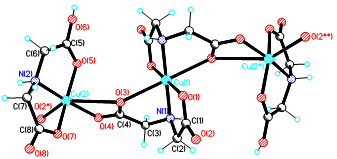

Downloads: 1
Field: Natural product chemistry and synthesis
Type: Research paper
Type: Research paper
Melissa officinalis L., Urtica dioica L., LC-MS/MS, antioxidant activity, anti-lithiatic activity.
Full Text (PDF): Download
https://doi.org/10.19261/cjm.2025.1328
Abstract (PDF)
Graphycal Abstract: Melissa officinalis L. and Urtica dioica L. were evaluated for their phytochemical composition and antioxidant and anti-lithiatic activities. LC-MS/MS analysis showed that M. officinalis contained a more diverse profile, especially flavonoids and phenolic acids enriched in the ethyl acetate fraction, while U. dioica demonstrated a simpler composition dominated by myricetin, riboflavin, sinapic acid, catechin, and β-carotene in its aqueous fraction. M. officinalis ethyl acetate extract showed the strongest antioxidant capacity in DPPH, ABTS, and FRAP assays. Its aqueous extract also exhibited notable anti-lithiatic activity, inhibiting calcium oxalate crystal formation by 87.12% at 2 mg/mL.


Downloads: 21
Field: Ecological chemistry
Type: Research paper
Type: Research paper
fluoride ion, surface water, Dniester River, Dubasari reservoir.
Full Text (PDF): Download
https://doi.org/10.19261/cjm.2025.1341
Abstract (PDF)
Graphycal Abstract: Concentrations of fluoride ions in the Dniester river and Dubasari reservoir, located on the territory of the Republic of Moldova, were analysed for 2011–2024. They ranged 0.05–1.07 mg/L, with higher values during low-water periods. Despite seasonal sampling, no clear dynamics were observed, due to altered hydrological regime. Fluoride levels were lower than the World Health Organization for drinking water.
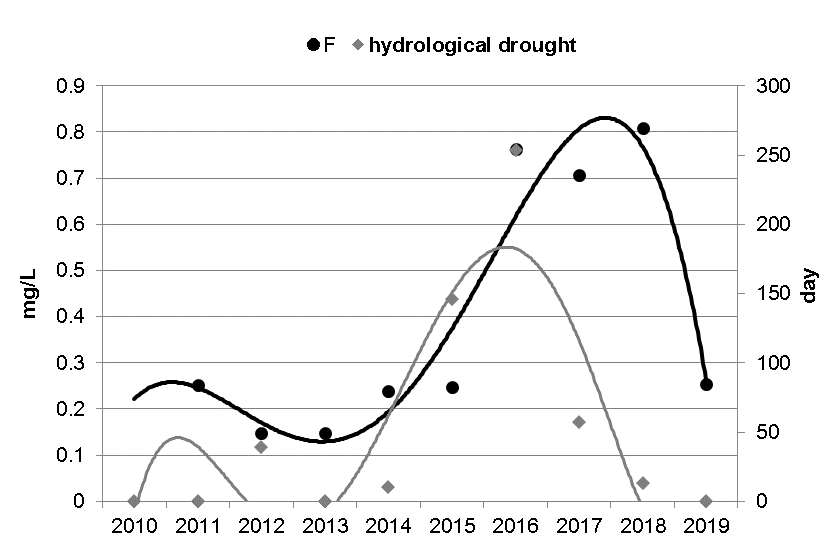

Downloads: 11
